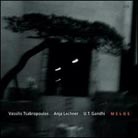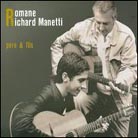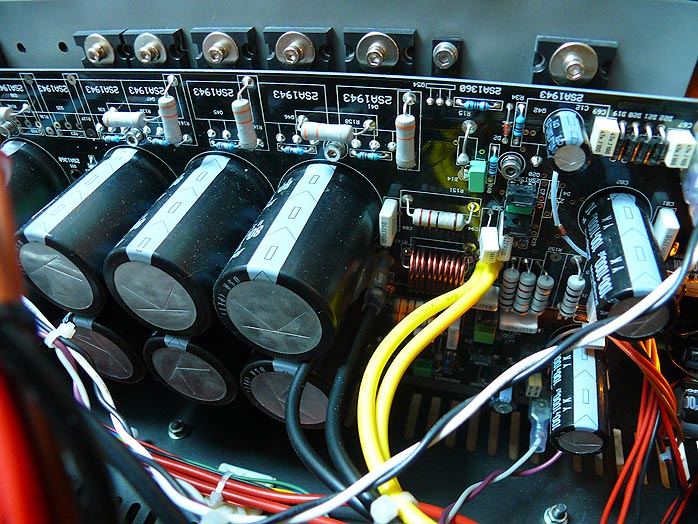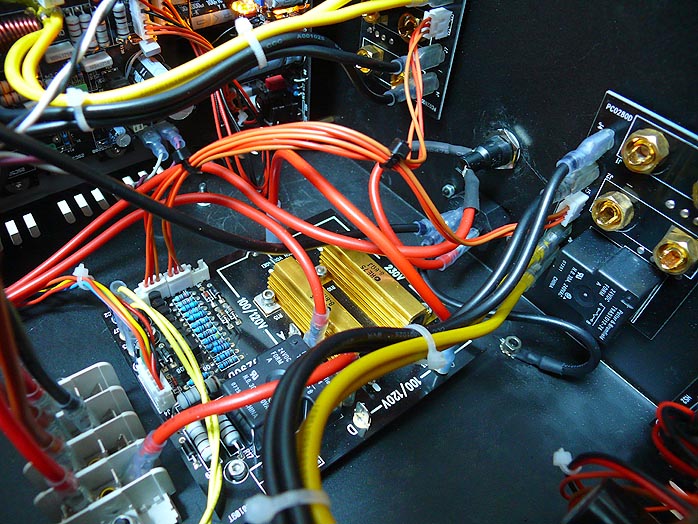|
This review page is supported in part by the sponsors whose ad banners are displayed below
|
|||||||||||||||
 |
|||||||||||||||
| Needless to say, nobody in their right mind -- that would be non-reviewers -- mates a massively powerful amplifier to a 91dB speaker with a perfectly flat 6-ohm impedance below 1kHz. To do Hegel's mighty H-10 justice required a gnarlier challenge. Our household, mind you, believeth not in the concept of bear-to-drive loudspeaker loads. Here they're considered incompetent abominations and designer laziness. But, less extreme examples of the power-is-cheap speaker school than Apogee Scintillas certainly exist. As stand-ins that don't take up space when not in use, I have a pair of Mark & Daniel 82.5dB 4-ohm Maximus Ruby monitors. A review pair of even smaller Mini + was still on hand as well. Yes, a big three- or four-way Aerial, Dynaudio, Magico or Thiel equivalent would have been more representative of what the H-10 designer probably expects to see used. But our kind can't be expected to own gear for all occasions... |
|||||||||||||||
|
| |||||||||||||||
To confirm, the Mark & Daniel speaker recipe of compact synthetic marble enclosures with small proprietary underhung hi-excursion mid/woofers and air-motion transformer tweeters is predicated upon low efficiency, thirst for current, control and high displacement to get big bass from small boxes. When everything goes their way, the M&D speakers are head-scratchingly potent. Without sufficient power however, nobody will be the wiser for their true potential. Or call them bloated, overloaded down low and all manner of other unsavory names instead. From that perspective, an amp of the Hegel's caliber and cojones is ideal if price-wise unrealistic. From the H-10's perspective however, it meant getting out of 1st gear to do what muscle amps are meant to do. Push gobs of current into appreciative loads. |
|||||||||||||||
 |
|||||||||||||||
No more first-watt monkey business. The H-10 must have breathed a sigh of relief had it been sentient. Its somewhat lackluster performance with the P-10 stable mate and over the Tango R now fully blossomed into a more appropriate load. The results were truly spectacular because a number of things happened all at once. First off, the midrange depression completely filled out and the overall sound became far more robust, meaty and warm. Two, the look-at-me obsession with speed disappeared. No more transient assaults. While impact remained, it now had proper weightiness. This included the treble which no longer suffered Platinum coldness but now was a rich rose gold. Three, like a red carpet, the soundstage had fully rolled out into the far corners of my space where before, it had been shallow to feel somewhat forward. |
|||||||||||||||
 |
On Blanco y Negro, the stunning live follow-up to Diego Jimenez Salazar and Bebo Valdés' Lagrimas Negras, the Cuban bass fistfuls of piano keys had the full and necessary heft, El Cigala's gloriously hoarse upper register the requisite raunchy energy. Sevara Nazarkhan's awesome Ethno-Pop release Sen [RealWorld] showed off all the trickery of expert studio manipulations to lay out the kind of exceptionally multi-layer staging that is the hallmark of mini monitors that can do real bass. The very well recorded piano of Vassilis Tsabropoulos on Melos [ECM] had both overtone shimmer and density in the many upper right-hand tinkles, quite a change from the previously lean and wiry sound. Ditto for the poetically duelling Maurice Dupont guitars on the father and son swing of Pere & Fils [Romane and Richard Manetti - Iris Music]. Now there was wood on the strings and true growl on Marc-Michel Lebevillon's snarling double bass, not just the upfront noise component. |
 |
|||||||||||||
 |
 |
||||||||||||||
For me there was no doubt now. This was the kind of sound Bent Holter had in mind when setting out on his limited edition project. In fact, I caught myself hoping that speaker designer Daniel Lee would have a chance to hear his tiny tots over these electronics; that's how impressed I was. Gone was the need to cruise the preamp competition to inject some valve-derived tone density. Gone was the convenient writer's crutch to deal in ready cliches of tube and transistor sound to sketch out an audiophile likeness of the hardware's performance. The upshot simply is that the H-10, like so many of its kind, is not a true load-invariant wonder. Given too light a load, it doesn't come into its own. Its ideal 'torque' curve is definitely outside the first handful of watts. That's not to say you need to enter the 1/3 power envelope. For me that would have meant 200 watts of output into the 4-ohm load of the monitors. I didn't remotely approach that. My guess is that somewhere around 10 to 20 watts, the H-10 begins to strut its stuff. When it does, all the comments of the previous page become irrelevant. |
|||||||||||||||
 |
|||||||||||||||
|
H-10 guts
|
|||||||||||||||
 |
|||||||||||||||
|
More internal gutsiness
|
|||||||||||||||
 |
|||||||||||||||
The wrap: If they indeed measure as superlatively as claimed -- this will remain something for our test bench equipped colleagues to determine -- audiophile propensity to equate superior distortion specs with sonic sterility would rule out Hegel's top components. That would be in grave error. As Nelson Pass has proven with his low-power FirstWatt amplifiers, particularly the F3 thru 5, transistor purity and superior noise specs need not correlate with aseptica at all. Now Hegel has issued a preamp which not only on paper but also to the ear appears like an F3 implementation - albeit in the low-level arena. It's a demonstration of benign ultra resolution and (as something I feel particularly qualified to comment on) seems to be an ideal mate especially for owners of single-ended triode amps who need an essentially invisible, completely noise-free volume control and don't mind an overt injection of dynamic verve and a subtle infusion of sweetness without otherwise diluting or shifting their carefully arrived-at aural bouquet. |
|||||||||||||||
 |
|||||||||||||||
The companion H-10 amplifier's wiry nervousness when not asked to leave the first few watts completely turns around to put weight and substance on its blazing reflexes once the load pulls it into higher gear. At that point, 3D soundstaging mirrors that of premium direct-heated SETs, with treble nearly their equal, fully incarnated but not saucy vocals and imperturbable linear bass into the nether regions that's not hyper chiseled. Like the German Octave amplifiers which run tightly regulated pentodes to approach transistor sound with a far smaller-than-common valve quota to put them somewhere on middle ground, these two Hegel electronics together pull a similar trick. From the other direction. They're sonically also 'mostly transistor' but manage a 20%-or-so lift of tube virtues in the areas of soundstage layering and image density. These two qualities conjoined declaw specific transistors shortcomings most valve lovers would agree on. It makes the resultant sound not "like tubes" but "just as enjoyable albeit different". Particularly for mondo power amplifiers, that has remained a quite elusive goal. With its H-10, Hegel has attained it. And for rather less money than the highly accoladed, permanently bridged biggest Bryston. While the Hegel makes less overall power, its claimed load stability into half an ohm is rather superior. That makes it a serious consideration for those shopping these leagues who own loads from hell - and who are decisive enough to secure one of only 30 units to ever be made. Truly brilliant stuff! |
|||||||||||||||
|
| |||||||||||||||
Quality of packing: Stout. The H-10's packing is positively enormous. Reusability of packing: Multiple times. Ease of unpacking/repacking: The H-10's considerable weight requires the usual boiler-plate care. Condition of component received: Perfect. Completeness of delivery: Power cords, owner's manuals. Quality of owner's manual: Very good. Website comments: Perfectly informative and easy to navigate. Human interactions: Prompt and forthcoming on all info requested. Pricing: Fully commensurate with performance and as such, not on the truly high side of things. Final comments & suggestions: Some customers may fancy the silver finish to be disappointed that the special edition comes only in black. |
|||||||||||||||
 |
|||||||||||||||
| Hegel website | |||||||||||||||
 |
|||||||||||||||